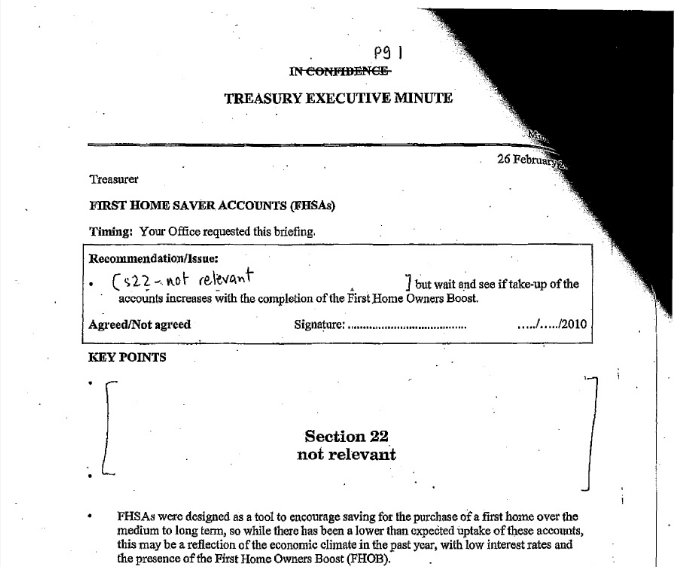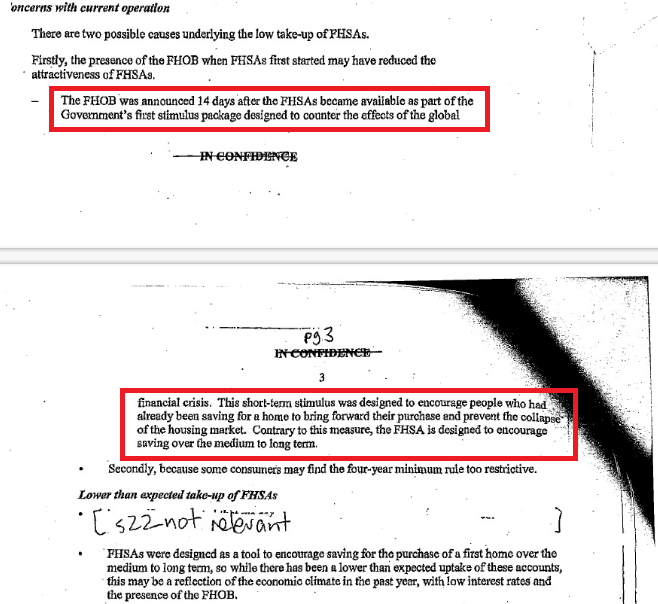There is no debating that Australians have a love affair with property. With that, come daily predictions on what house prices and rents will do in the future.
But have you ever asked yourself what actual research goes into making these predictions? Most headline articles don’t give the reasoning or background research, just that we have a shortage of houses, there is pent up demand, or last year recorded record growth so it must happen next year.
I’m starting to wonder if the later is true.
The West Australian has today printed a please explain on why BIS Shrapnel’s June 2010 prediction of 8 per cent rise per year for the following two years has never eventuated. In-fact house prices have actually dropped 5 per cent.
The excuse – no one could have anticipated the scale of the global financial crisis.
A sleep at the wheel
Australia, like many countries has seen an unusual and rapid rise in house asset prices in the lead up to the GFC. With household debt at unsustainable levels and households spending more than they earned, the housing market started to falter.
The Rudd Government’s solution was the first home owners’ boost (FHOB). It was a short term stimulus program “designed to encourage people who had already been saving for a home to bring forward their purchase and prevent the collapse of the housing market.”


After an extension, the boost ended 6 months prior to BIS Shrapnel’s prediction. At the time demand was dwindling as any first home buyer considering buying in the years to come, had brought forward their purchase to take advantage of the government’s free money.
Furthermore, there were concerns about the sustainability of the housing market prior to the boost. If the housing market wasn’t sustainable with that level of household debt prior to the boost, encouraging generation Y and X into excessive debt wasn’t exactly going to fix the market – in the long term.
In my opinion a more valid excuse for BIS should have been, the Australian housing market is too big to fail, we expected the government to provide more grants. But even still, I admit, that logic is flawed. You can only bring forward so much demand, before that lifeline becomes exhausted.
That leads us to this logic – well it went up this much last year and our straight line says it has to go up that much next year.
Or are vested interests trying to lead the market. The Australian housing market is certainly not where it is today based on sound financial fundamentals. But something leads us here. Experts will always predict rents increases of 10 per cent in the next year. Landlords, for thought of being left behind will then act. They never look in the rear view mirror and report on what rents actually did because it can be quite sombre. The same applies for forecast increases in asset prices. Buyers are likely to jump in and fight for homes on the belief they will be 8 per cent higher next year. Say they will fall, and buyers will remain on the side lines (and not purchase property research reports.)
But the article not only picked on BIS Shrapnel. The West Australian printed “Australian Property Monitors have also made some bold, but wrong, real estate predictions.”
APM’s excuse – The GFC again, the mining tax debate and an unexpectedly big downturn in consumer sentiment. Personally, I can’t really say with the deleveraging process and households now spending within their means (after spending their $900 handout first,) that a big fall in consumer sentiment wasn’t on the cards. Did anyone put off buying a house because the mining tax debate was on?
With most experts now calling the bottom, do you think they have done their research? Have they considered household debt levels, current housing credit growth, stock on the market, the over-supply of houses, or affordability?
According to the West Australian report, BIS Shrapnel now forecast the Perth median house price will be $580,000 by mid 2015.
What is your forcast? Do you think they are on the money?
» Property experts blame the GFC for dud forecasts – The West Australian, 5th August 2012.

I just had a conversation with a woman who has worked for the Commonwealth Bank near Melbourne for last 25 years. I asked her for her view on the property sector as she works in the front line dealing with mortgages. To cut to the chase she said she has never seen things so bad with the number of people coming in who can’t pay their mortgage. She helps them with the formalities required to access their superannuation funds under hardship provisions to help offset late payments. As many are young couples their super available to withdraw covering late mortgage payments will soon run out. She then said that the CBA is going to get tough from next year and start foreclosures on those who are late in payment.
She also said that property prices are falling significantly based on the fact that the houses the CBA have foreclosed on have not fetched the previous price payed and that the mortgagees still owe the bank money even though they have had to sell and no longer own the property.
Whose bright idea was it to allow mortgage stressed home owner to access their super? It’s just ‘re-arranging deck chairs on the Titanic’.
Well seeing as 2015 is when the “Mining Boom” is predicted to have come to a close,and the money arising from said boom seems to have been frittered away, what will be “supporting” this amazing valuation?
OK, on the basis of:
1. Boom over (so the Au$ will be forced to resume it’s long term averge value against the US$)
2. Whatever’s left of Manufacturing will have either been bankrupted or will have been off-shored to cheaper labour economies (which by then will probably include chunks of the EU!)
3. Wholesale interest rates charged to Aussie banks will be sky high – and their ratings will be approaching, or worse than junk bond status (assuming Mr and Mrs Taxpayer have not been unduly tapped for “The Bank Bailout we HAD to have!”
4. As Michael F points out – there are ALREADY signs of significant (and obviously under-reported) mortgage stress, so by then things will have not improved, but worsened, with the market awash with “Mortgagee in Possession” quick-sale properties,
– so I’m guessing $58,000 (and probably far lower in the “former Mining Colonies”). If there are far fewer jobs, and far less money circulating, prices WILL have to fall, and since Australia has blown a bigger bubble than even Ireland, the distance to fall will be greater.
BIS Shrapnel has an awful record for price predictions.
However, looking at the Perth market in particular we have:
– Increasing number of property sales (week to August 1st was 70% increase on same week previous year, REIWA)
– Falling stock on market (now under 11,000, REIWA)
– Rents have increased significantly (15% over last 12 months according to Residex)
– Vacancy rate has dropped from 2.4% last year to 1.9% currently (REIWA)
– Construction has remained subdued even as Perth’s population has increased significantly
– Prices in Perth plateaued for 6 years, currently $5k under June 2006 prices (Residex)
Even though I think prices are unreasonably high all over the country (including Perth) I think there is the potential for prices to rise in Perth even if the growth spurt only lasts short term.
Many thought that Melbourne prices were ridiculously high in 2008 and they went on to record 35% growth over the next 2 years (2009-2010 according to RP Data / Residex Index).
“Markets can remain irrational a lot longer than you and I can remain solvent”.
Rubbery figures? We aren’t any different.
****************************
http://www.salon.com/2012/08/03/absolutely_insane_on_housing/
In the housing and foreclosure space, Levitin notes, there is no leadership: “No one wants the football.” That’s why the government doesn’t have adequate data on the characteristics of the foreclosure epidemic. You can’t manage what you can’t measure. So if you want to avoid managing a problem, just don’t measure it.
All valid points, however the big question is where the price of iron ore will end up and the flow on effect to the WA economy.
Unemployment and GDP growth in WA is far, far above the national average and yet house prices as you say have been essentially flat over the last several years.
The flipside is that WA is far more exposed to an (inevitable) cyclical fall in the price of iron ore and the wheels falling off the resource sector.
If unemployment jumps 2% in WA over the next 12-24 months what do you think will happen to house prices?
BIS Shrapnel have vested interests in the great charade. Medium price depends on how much money printing occurs. If they cut rates to 1% Aussies are stupid enough to borrow heaps again, so anything can happen. Might get a FHBG of $100,000 to mix it up.
Should all be taken with a grain of salt, print the prediction and compared with the actual down the track. Why do we keep listening to the same economists that consistently get it wrong. Stock market predictions are my favorite.
Yoda predicts dry dusty conditions with tumbleweeds going through the mining towns of WA. Prices will eventually revert to being what they are worth. A guess would be Perth medium around $450,000
The ultimate property shorting example!
Family buys back $1.55m unit for $381k
http://www.goldcoast.com.au/article/2012/08/07/436190_gold-coast-real-estate.html